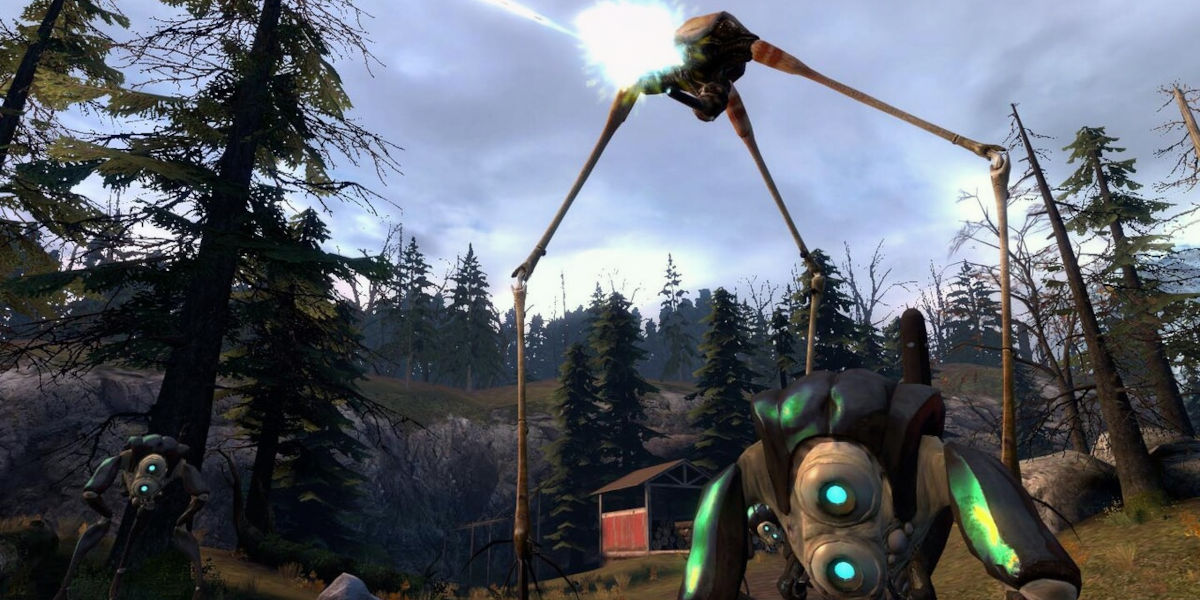The gaming world has borne witness to numerous revolutionary titles over the years, but few have been able to match the consistent high-impact presence of Valve's Half Life 2. This isn't merely due to its stunning graphics and the overall intensity derived from it - centering on the physics mechanics and the immersive narrative of the game is what advances its revolutionary status.
Even years after its initial release, questions still arise like: 'Half Life 2 physics mechanics, how did it influence the gaming industry?' and 'Why is Half Life 2 still a must-play?'. This article dives into these pivotal aspects to unmask the enigma that is HL2's immersive narrative and physics engine.
The Marvel of Half Life 2 Physics Mechanics
The true magic of Half Life 2 lies not just within its engaging storyline or eye-catching visuals, but also within the sophisticated and revolutionary implementation of real-time physics mechanics. The game utilized a physics engine named 'Havok', which introduced a level of interaction and realism never seen before in the gaming sphere.
In HL2, you weren't just an observer to the on-screen action - you were a participant. From stacking crates to create makeshift staircases and using the gravity gun to manipulate objects as weapons, the game defied the barriers of traditional videogaming. The fluid transliteration of real-world physics into a gaming platform exemplified ground-breaking innovation, setting a benchmark for subsequent titles.
Another novel aspect was the integration of physics puzzles integrated into HL2's gameplay. These puzzles weren't just for show, rather they were designed to motivate players into utilizing the game's physics engine in unique and imaginative ways. This feature spotlighted the functional importance of Half Life 2's physics mechanics and how they added an extra depth and complexity to the gameplay experience.
The Tapestry of HL2's Immersive Narrative
Immersion is a fundamental pillar within the world of gaming. It’s the conceptual mechanism that allows players to invest countless hours in a digital universe, treating it akin to a second reality. And when discussing prime examples of immersive gaming environments, Half Life 2 stands unparalleled.
Despite having a mute protagonist, Gordon Freeman, the narrative offers an engaging and richly detailed story. The game employs show-don't-tell tactics, allowing the environment and supporting characters to provide precious nuggets of information relating to the universe's lore. Players weave together the story themselves, piecing together clues and context through subtle environmental storytelling and dialogue.
Frequent interactions with well-drawn characters, stunning locales - from the dystopian City 17 to the eerie Ravenholm - and a palpable atmosphere of oppression and rebellion contribute to the immersive tapestry. This narrative design forged a timeless adventure, resulting in sustained relevancy, even years after the game's release.
Understanding Physics in Half-Life 2
In no other game does the usage of physics play a more significant role in the storytelling than in Half-Life 2. The game's physics have been integrated masterfully into puzzles, combat, and exploratory mechanisms, pushing the envelope for immersion and interactivity within the gaming world at its time of release in 2004.
The physics engine developed by Valve, known as the Source engine, permits us to manipulate the gaming environment in ways most games wouldn't dare. It allows players to pick up objects, stack them to create climbable structures, topple obstacles in the path, and use tools in the environment to solve problems.
For example, one of the earliest tests a player faces in Half-Life 2 is a simple physics problem involving a teeter-totter and some cinderblocks. This casual integration of real-world mechanics expands the immersive experience of the game, establishing Half-Life 2 as a veritable masterpiece of the gaming industry.
Another influential aspect of Half-Life 2 physics is the Gravity Gun, a tool that allows you to grab, lift, and hurl objects with ease. It is a prime example of how physics mechanics makes the gameplay intriguing and unique. The utilization of this tool in both combat and puzzle-solving scenarios is an innovative twist in first-person shooter gameplay.
Narrative Immersion and Emotional Connection
The narrative structure within Half-Life 2 is unrivalled. Valve didn't just supply Gordon Freeman—an MIT graduate—with a gravity gun and a crate of puzzles. They also gave him an emotionally stirring story. By employing a continuous narrative—without cutscenes or breaks in the action, and entirely based on the player’s perspective—the game manages to create an impressive symbiosis between player and character, thereby forging an absorbing connection.
Valve's commitment to a "show, don't tell" narrative style deserves praise too. You’re given enough in-world context to understand what's happening but not so much that you're distracted from the action. This minimalistic approach not only makes the story easier to follow but also places the gamer firmly within the shoes of the protagonist, thus escalating the level of immersion.
The Legacy of Half-Life 2
Half-Life 2 is more than just a game; it is a revolution in the way stories can be told through an interactive medium. Its unique combination of intricate physics mechanics, innovative gameplay and immersive narrative have not just left an indelible mark on the gaming industry, but have also paved the way for how future games are developed and played.
The modern gaming landscape is now littered with titles which have borrowed, built upon or downright replicated the facets of Half-Life 2's design. The fact that half a decade later, this classic still stands as a high-water mark says much about the impact and success of the game.
Ultimately, Half-Life 2 remains a must-play for every gamer—newcomers and veterans alike. The genius behind its physics mechanics and narrative design continues to shine brightly, making the game a timeless piece in the world of interactive entertainment.




